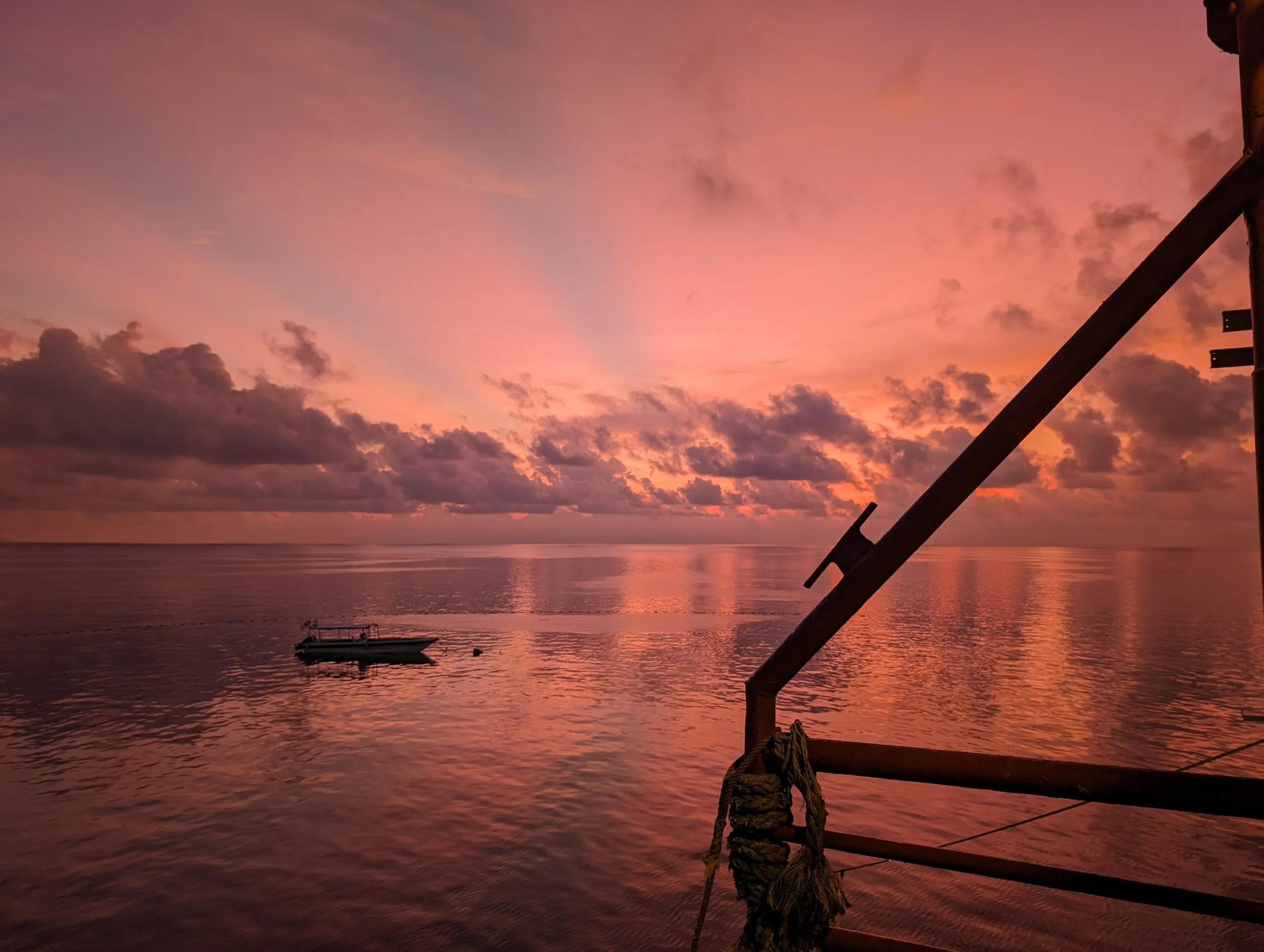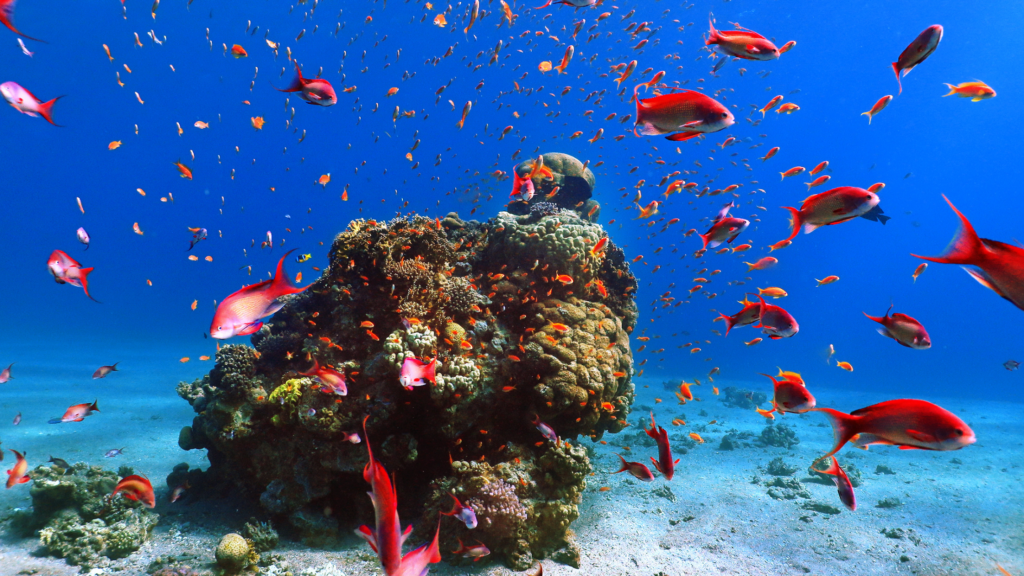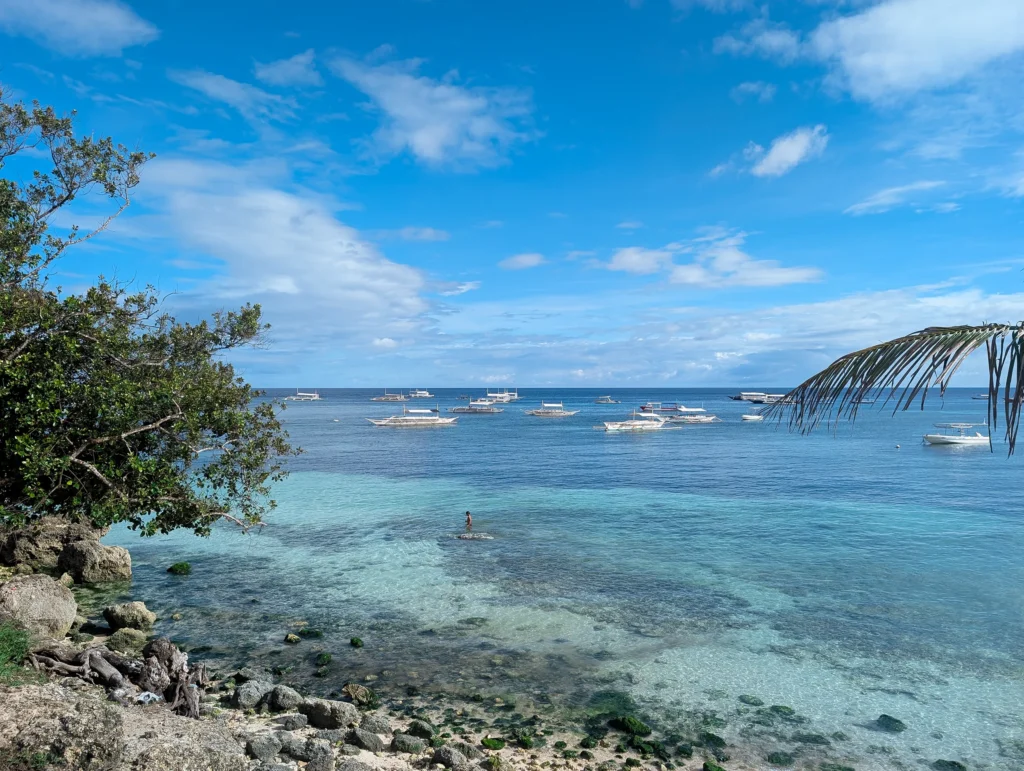Imagine deep blue water, protected coral reefs, huge bump-head parrotfish, tons of turtles, sharks, and unique macro marine life like nudis, frogfish, and pygmy seahorses. All of these wonders (and so many more) await you off the coast of Malaysian Borneo.
Borneo has been on my bucket list since I was a kid, watching TV programs about orangutans and the rainforest. When I found out that Borneo was also a hotspot for incredible diving, I knew I had to go.
This trip was one of those adventures that you book within a couple of days and leave a week later. We were already in Thailand, having spent several months diving in Koh Tao – and we were both itching to go diving somewhere new. A friend had recently traveled to Sabah and after seeing the diving, we made the decision to head that way.
The journey took us from Thailand to Kuala Lumpur to Sabah, Borneo. The end goal was to spend as much time as possible diving at the protected island of Sipadan. Sipadan is actually Malaysia’s only oceanic island, located in the Celebes Sea. It’s also the center of one of the richest marine habitats in the world.
So how can you plan your trip to this unique diving hotspot? This guide will tell you everything you need to know!
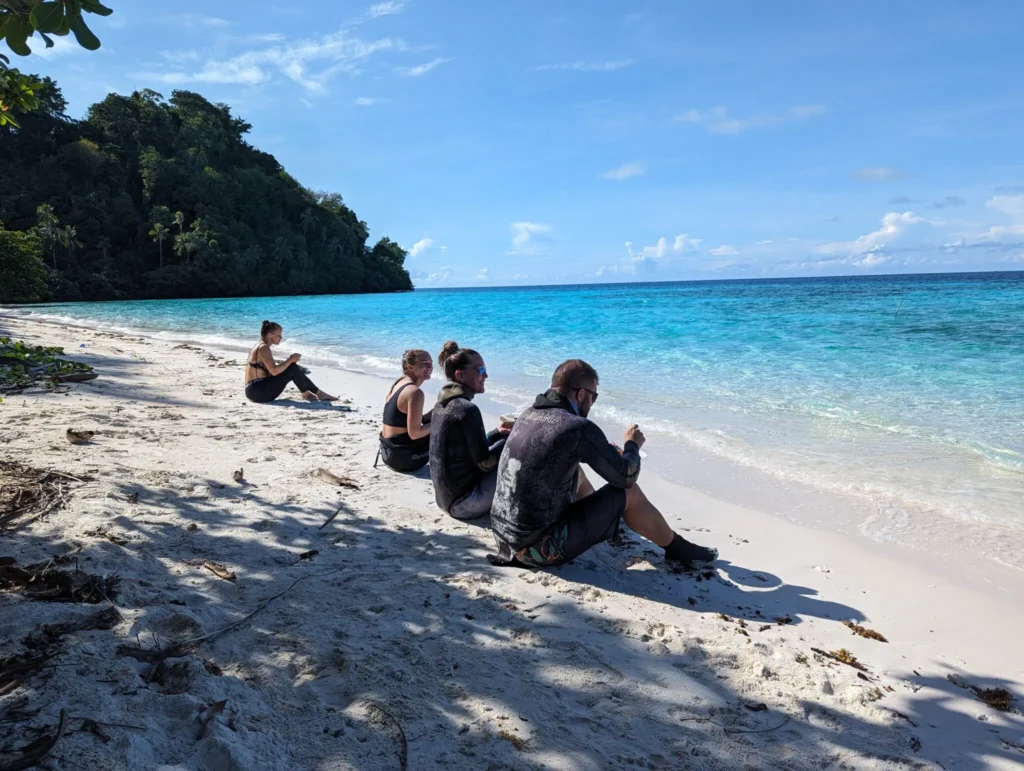
What You Need to Know About Diving in Borneo (and Sipadan)
If you’re headed to Borneo for diving, chances are you want to spend as much time as possible at Sipadan Island.
Sipadan is a protected island. You can’t stay overnight, there are police you have to check in with on arrival and they limit the number of people who can come to the island and dive each day.
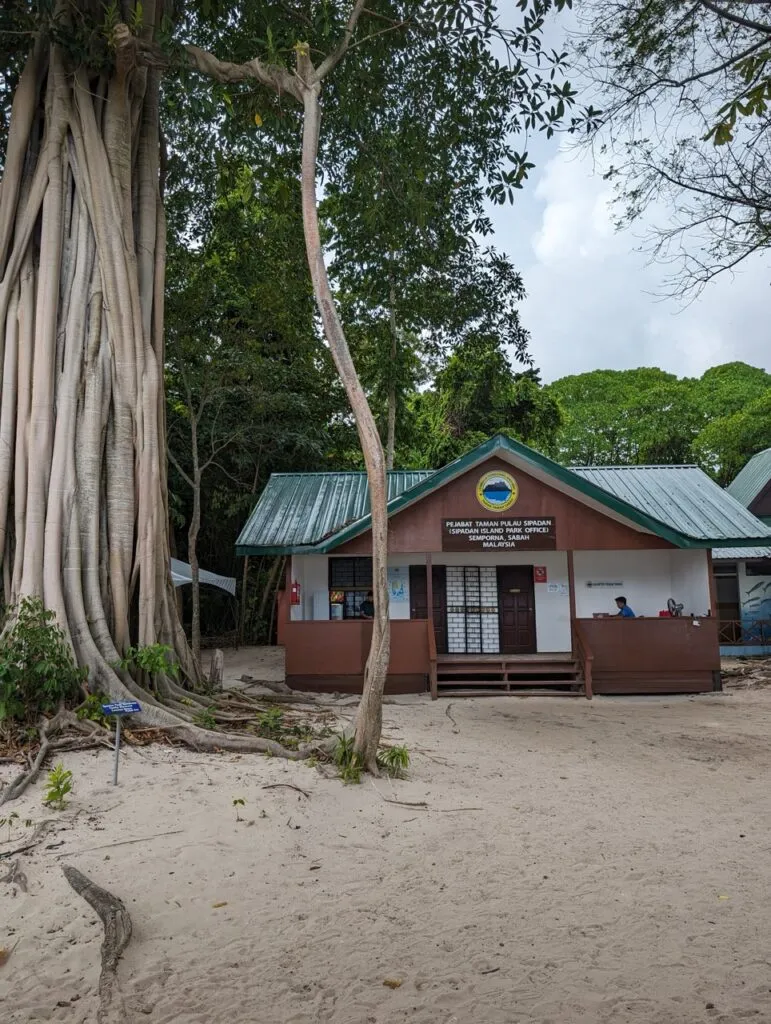
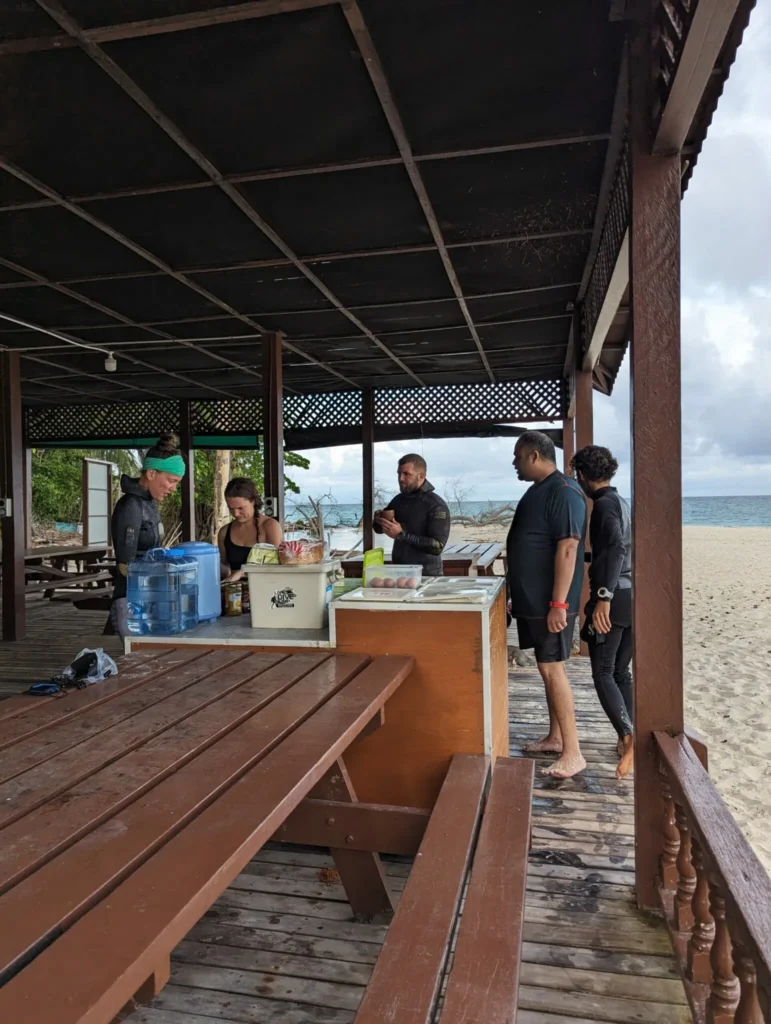
Rules for Divers in Sipadan
- You must be an advanced diver
- Divers are limited to two dives around Sipadan a day
- There is no overnight accommodation or opportunities to stay on Sipadan
- Freediving or snorkeling at Sipadan is not allowed
When diving at Sipadan, you’ll arrive by boat early in the morning. Most of the dive centers are in and around Mabul Island, Kapalai Island, or Semporna (on Borneo). Since you are limited to two dives a day at Sipadan, your dive center will usually take you on a third boat dive around Mabul or Kapalai after leaving Sipadan.
Off the nearby island of Mabul, you also have a unique opportunity to stay on the world’s first (and only!!) decommissioned oil rig that’s been converted into a diving rig. It’s essentially a diving liveaboard that stays in place. You can learn more about our experience on the Seaventures Dive Rig here.
The best time to go to Sipadan
What’s the best time of year to go diving in Sipadan? We personally went at the end of May, the beginning of June and the weather was amazing. We had a couple of days of rain, but that doesn’t affect you underwater. The water temperatures were warm and sea conditions were perfect.
Seaventures told us that diving conditions are great all year long. But it’s important to note that Sipadan Island closes every November (for about a month) for marine conservation. Our guides also told us that if you want to see big sharks, it’s better to come when the waters are a bit cooler (around January to March).
Getting to Sipadan Island
You’ll likely be flying to Sahab from somewhere else in Asia. We booked our flights from Krabi to Sabah with a layover in Kuala Lumpur. Our flights took us directly to Tawau Airport (TWU), which is about one hour from Semporna.
You can also fly into Kota Kinabalu International Airport (KKIA) which is the international gateway to Sabah. From Kota Kinabalu, you can take a domestic flight to Tawau or you can take a bus directly from KK to Semporna. We took an overnight bus from Semporna to KK which was extremely affordable and easy.
Depending on what hotel you’re staying at, they’ll usually pick you up from Tawau Airport or anywhere in Semporna. From the airport, you’ll head to the pier in Semporna where you’ll take a boat ride out to Mabul or Kapalai.
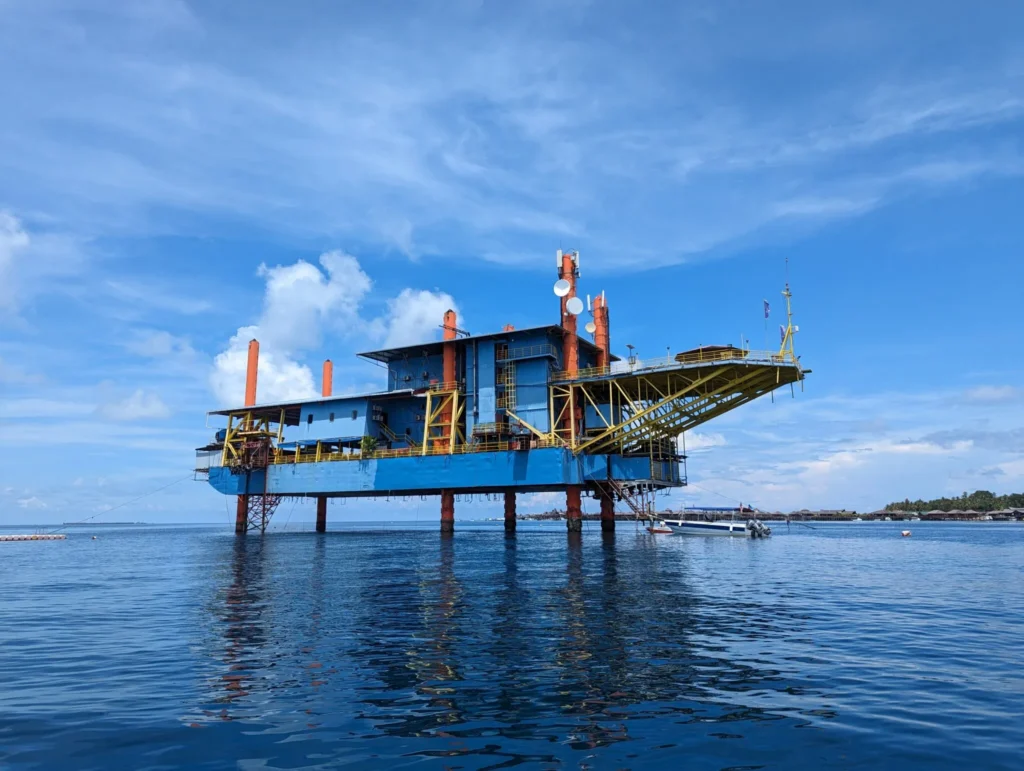
Choosing where to stay and who to dive with
Choosing where you stay will also determine who you dive with. Most of the hotels are also your dive center and everything is booked as a package. We looked at two main options, staying on Mabul or staying on the Seaventures Dive Rig.
The main consideration is the number of Sipadan passes. Since they limit the number of divers who can visit Sipadan, each dive shop gets allocated a specific number of passes and that determines how many times you can dive into this underwater paradise.
The officials managing Sipadan Island issue 176 passes a day. If you’d like to see how those passes are allocated, so you can determine who you’d like to dive with, check here. But for your reference, Borneo Divers (one of the biggest centers), has 12 Sipadan passes and Seaventures Dive Rig has 10 Sipadan passes. Another popular diving center in Mabul is Scuba Junkie.
The dive centers we considered when planning our trip:
- Scuba Junkies (a more affordable option on Mabul)
- Seaventures Dive Rig (who we went with)
- Borneo Divers (one of the original dive centers with 4-star accommodation on Mabul)
Each dive center offers a similar package. The more days you stay, the more days you’ll have an opportunity to visit Sipadan. We stayed at Seaventures for 5 nights, and 6 days and managed to spend 3 days at Sipadan. But usually, for a stay that long, two Sipadan days are guaranteed.
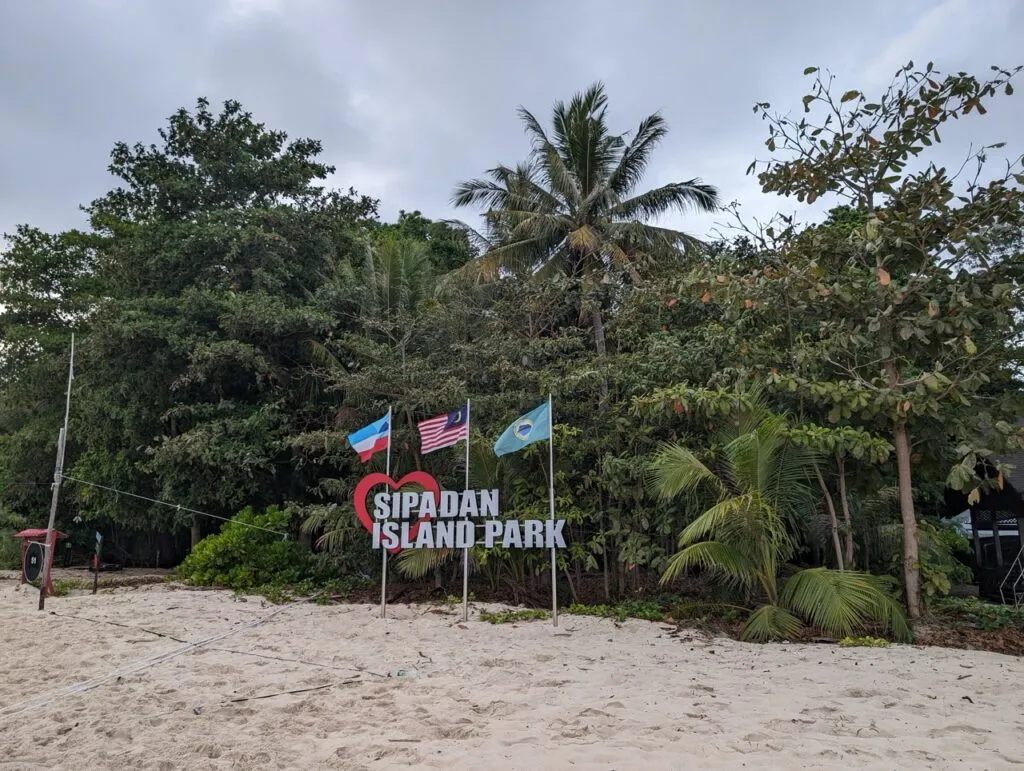
What to expect when diving at Sipadan Island
We ended up having the opportunity to dive at Sipadan Island 3 times during our trip. Which means we got to do a total of 6 dives on the island. There are a couple of things to keep in mind when you’re diving on Sipadan Island.
First of all, the currents. The island can be home to really strong down currents, up currents, and ‘washing machine’ currents. This is one of the reasons why they require you to be an Advanced Diver. I would recommend diving with your own SMB so that if you get pulled away from the group, you can safely ascend and be located quickly by your boat captain.
We only had strong currents on one of our dives at Barracuda Point, otherwise we got really lucky with fairly calm waters at Sipadan.
The other thing you should know is that they have ‘dive marshals’ who dive the sites to make sure no tourists are touching or breaking corals. You need to be very careful that you are properly weighted and in good control of your buoyancy because if you do find yourself bumping into the corals it can add a huge cost to your holiday.
Dive Log: Sipadan Island
Dive Site: West Ridge
- Max Depth: 30.2 meters (average depth 16.3 meters)
- Dive Time: 54 minutes
- Sea Temperature: 30°C
- Visibility: 40 meters
Notes: Stunning first dive at Sipadan. Steep wall drop-off. Schools of bumphead parrotfish, a couple of gray reef sharks out in the blue, turtles. Beautiful vibrant coral and reef fish.
Dive Site: Staghorn Crest
- Max Depth: 30.2 meters (average depth 16.2 meters)
- Dive Time: 50 minutes
- Sea Temperature: 30°C
- Visibility: 20 meters
Notes: School of jackfish with giant trevally hunting. Grey reef sharks, curious whitetip reef sharks, blacktip reef sharks, turtles.
Dive Site: Hanging Gardens
- Max Depth: 26.9 meters (average depth 14.8 meters)
- Dive Time: 52 minutes
- Sea Temperature: 30°C
- Visibility: 40 meters
Notes: 2 gray reef sharks, The first time we saw the school of bump heads (we actually saw two schools), we went into the blue to look for hammerheads but didn’t see them. But we did see two turtles.
Dive Site: Barracuda Point
- Max Depth: 30.1 meters (average depth 16.7 meters)
- Dive Time: 50 minutes
- Sea Temperature: 30°C
- Visibility: 40 meters
Notes: Strong current, we had to swim against the current in the canyon for a bit. Some barracuda but no schools. We did see a couple of gray reef sharks.
Dive Site: Barracuda Point
- Max Depth: 29.4 meters (average depth 14 meters)
- Dive Time: 51 minutes
- Sea Temperature: 29°C
- Visibility: 20 meters
Notes: Extra trip to Sipadan! Gray reef sharks, white tip reef sharks, smaller school of bumphead parrotfish and some barracuda. Free swimming black eel and a giant moray. Beautiful turtles swimming along. Boxy blue cowfish, really beautiful pufferfish
Dive Site: West Ridge
- Max Depth: 29.6 meters (average depth 19.5 meters)
- Dive Time: 51 minutes
- Sea Temperature: 29°C
- Visibility: 18 meters
Notes: Another wall dive at Sipadan, the visibility wasn’t as good as last time, but I still loved swimming along the wall. Swam into the blue to look for hammerheads (but unfortunately didn’t see them)—beautiful corals at the end.
What will you do when you’re not diving at Sipadan?
Don’t worry, when you’re not diving at Sipadan there will still be plenty to do. Each day you’re in Mabul you’ll do 3 boat dives and there are plenty of dive sites to choose from around Mabul, Kapalai, and Si Amil island.
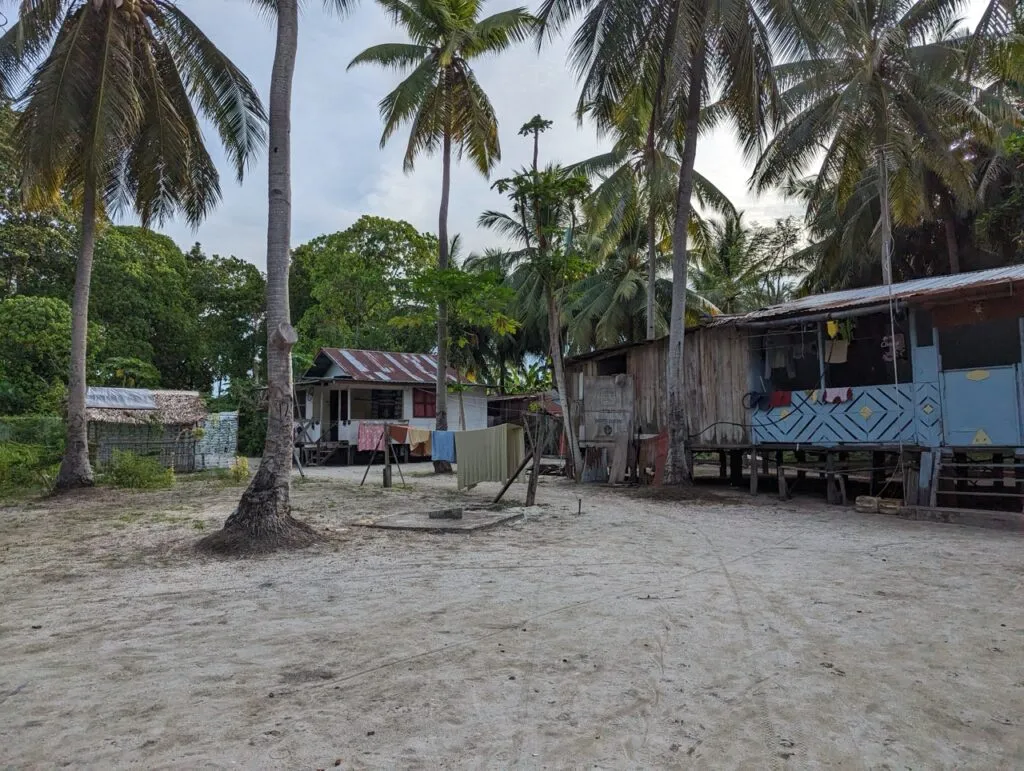
Diving at Mabul and Kapalai
Mabul and Kapalai are considered some of the best macro diving in the world. We saw incredible frogfish daily, octopus, cuttlefish, and even a pygmy seahorse that was no bigger than my pinky fingernail! On most dives, we saw more unique nudibranchs than we could count and on almost every dive we saw turtles.
One thing I will say is that there is a lot of trash around Mabul Island. Because of the tides, the nearby islands of the Philippines, and the lack of infrastructure to handle the trash on the island, a lot of it ends up in the sea. Seaventures regularly do dives to clean up the dive sites, but it’s likely that you will see trash floating at the surface and on your dives.
During our dives we did what we could, filling up our pockets with trash. You can also ask your dive shop if they have mesh bags that you could carry while you dive.
Dive Log: Mabul Island
Dive Site: Paradise 1
- Max Depth: 16.4 meters (average depth 11.4 meters)
- Dive Time: 39 minutes
- Sea Temperature: 32°C
- Visibility: 15 meters
Notes: On our first dive with Seaventures Dive Rig (the ‘test’ dive) We saw the biggest turtle that I’ve ever seen (I honestly thought it was a sculpture, not a real turtle.) First yellow frogfish!!!, blue spotted ribbon tail ray, another big sea turtle, 2 robust ghost pipefish, and a little puffer fish. I was not expecting to see so much!! And a school of Batfish.
Dive Site: Eel Garden
- Max Depth: 24 meters (average depth 14 meters)
- Dive Time: 47 minutes
- Sea Temperature: 30°C
- Visibility: 12 meters
Notes: Garden eels poking out of the sand (by the hundred). Octopus, frogfish, blue spotted ribbontail ray, juvenile batfish, nudis, and tiny shrimp.
Dive Site: Froggy Lair
- Max Depth: 23.5 meters (average depth 15 meters)
- Dive Time: 45 minutes
- Sea Temperature: 30°C
- Visibility: 20 meters
Notes: Sandy bottom, artificial and natural reef dive. We saw a big school of yellowtail barracuda. Lots of lionfish (common, juvenile, and black), some artificial reef structures, and a really beautiful natural reef. White moray out swimming.
Dive Site: Paradise 2
- Max Depth: 18.2 meters (average depth 12.6 meters)
- Dive Time: 51 minutes
- Sea Temperature: 29°C
- Visibility: 12 meters
Notes: Sandy bottom, artificial reef dive. We immediately saw a large red frogfish, explored a mini wreck with 3 sleeping turtles, and saw a cowfish.

Dive Log: Kapalai Island
Dive Site: Mandarin Garden
- Max Depth: 20.7 meters (average depth 15.4 meters)
- Dive Time: 64 minutes
- Sea Temperature: 30°C
- Visibility: 15 meters
Notes: Best night dive of my life. Mandarin fish mating ritual for almost 30 minutes. Scorpionfish joined to watch. Terrifyingly massive giant moray eel – Bruce. Two frogfish, one walking. Nudis, shrimp, crabs.
Dive Site: Mandarin Valley
- Max Depth: 21.4 meters (average depth 16.2 meters)
- Dive Time: 51 minutes
- Sea Temperature: 30°C
- Visibility: 10 meters
Notes: Mainly artificial reef dive with sandy bottom. Glittering pipefish, juvenile sweetlips, loads of nudis (sooooo many), peacock mantis shrimp, I counted 13 flabellina nudis over the course of the dive.
Dive Site: Black Ray Channel
- Max Depth: 30.1 meters (average depth 17.2 meters)
- Dive Time: 51 minutes
- Sea Temperature: 28°C
- Visibility: 25 meters
Notes: 3 (BIG) Cuttlefish, Eagle Ray (in the distance), Yellow Boxfish (adult), Great Barracuda, really beautiful coral reef and loads of colorful nudis, and a white scorpion fish!!
Dive Site: Ray Point
- Max Depth: 24.8 meters (average depth 16.4 meters)
- Dive Time: 51 minutes
- Sea Temperature: 30°C
- Visibility: 20 meters
Notes: PYGMY SEAHORSE OMG!!! Juvenile yellow boxfish with an adult version, flamboyant Cuttlefish or a pygmy squid (unsure), blue spotted boxfish, and several morays.
Dive Site: Kapalai Rock
- Max Depth: 24 meters (average depth 14.1 meters)
- Dive Time: 52 minutes
- Sea Temperature: 29°C
- Visibility: 25 meters
Notes: Sandy Bottom with beautiful natural reef. Tiny black lionfish, Adult yellow boxfish, moray, white stonefish, white pufferfish, beautiful colorful coral reef. Lovely drift along. Andrej spotted a cool nudi as well!

Diving at Si Amil
Si Amil is home to the most incredible soft corals I have ever seen. If you’re lucky you’ll also get the chance to see a school of devil rays, so it’s definitely worth visiting.
Since Si Amil is further away from Mabul, some dive centers don’t visit it as frequently. We simply asked the Seaventures crew and they organized a day for us all to go. In between dives, you have a picnic breakfast on the most incredible white sand beach – and because it’s further away, you’ll likely be the only dive center there!
Dive Log: Si Amil Island
Dive Site: All Blue
- Max Depth: 30.3 meters (average depth 18.4 meters)
- Dive Time: 55 minutes
- Sea Temperature: 28°C
- Visibility: 40 meters
Notes: Our second dive at Si Amil, once again a channel and reef dive (looking for the devil rays). Juvenile pinnate batfish, tons of nudis, tiny juvenile ribbon eels, orangutan shrimp (!!)
Dive Site: Red Rock
- Max Depth: 29.8 meters (average depth 20.9 meters)
- Dive Time: 52 minutes
- Sea Temperature: 29°C
- Visibility: 40 meters
Notes: Reef and channel dive with incredible soft corals. We saw two banded sea snakes, and a couple of nudis (a really cool one at the end). The most beautiful soft coral reef I’ve ever seen.
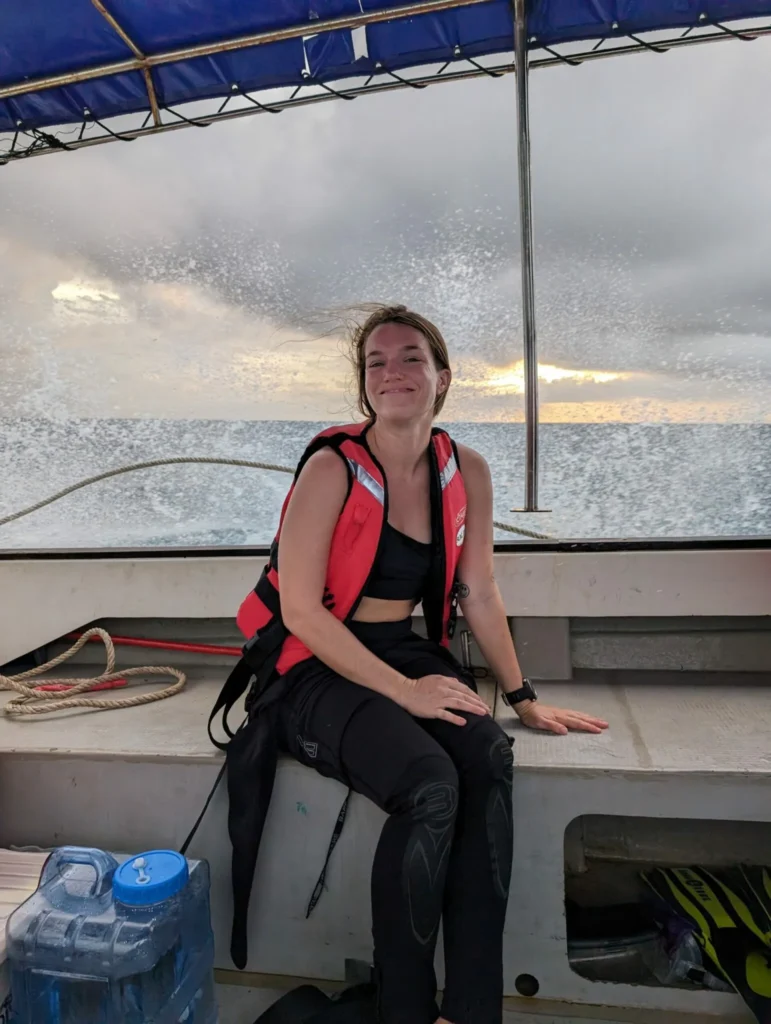

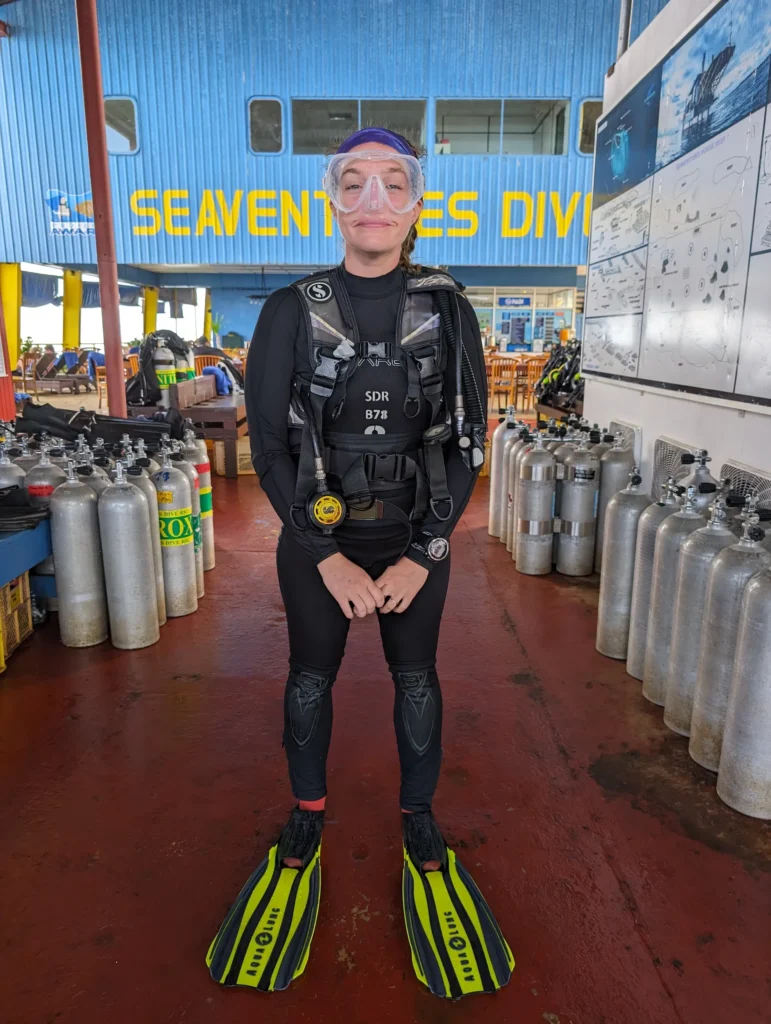
Unlimited House Reef Dives
If you’re staying on the dive rig you’ll never run out of things to do. The ever-refreshing cake fridge, games room, sun deck, and house reef will keep you busy during your downtime. Take advantage of the chance to do unlimited house reef dives with your dive buddy. We absolutely loved this and still regret not doing even more dives under the rig.
Dive Log: Seaventures House Reef
Dive Site: Seaventures House Reef
- Max Depth: 18 meters (average depth 14.2 meters)
- Dive Time: 39 minutes
- Sea Temperature: 30°C
- Visibility: 8 meters
Notes: ‘Test Dive’ at the house reef. Strong current at the house reef. We saw several HUGE crocodile fish, unique nudis, juvenile bump head parrotfish, white leaf scorpion fish, and I saw a scorpion fish fan its ‘side’ fins and open its mouth (really cool!)
Dive Site: Seaventures House Reef
- Max Depth: 17.1 meters (average depth 14.7 meters)
- Dive Time: 59 minutes
- Sea Temperature: 29°C
- Visibility: 15 meters
Notes: Incredible, fun macro dive at the house reef. Large octopus at the start, loads of different nudis, boxfish, different lionfish, crocodile fish, moray, blue spotted ribbontail ray.
Dive Site: Seaventures House Reef
- Max Depth: 16.6 meters (average depth 13.6 meters)
- Dive Time: 66 minutes
- Sea Temperature: 29°C
- Visibility: 10 meters
Notes: Another incredible house reef dive. We saw a Juvenile yellow boxfish(!!), once again, tons of nudis, white-eyed moray, and fimbriated moray together, and several crocodile fish.
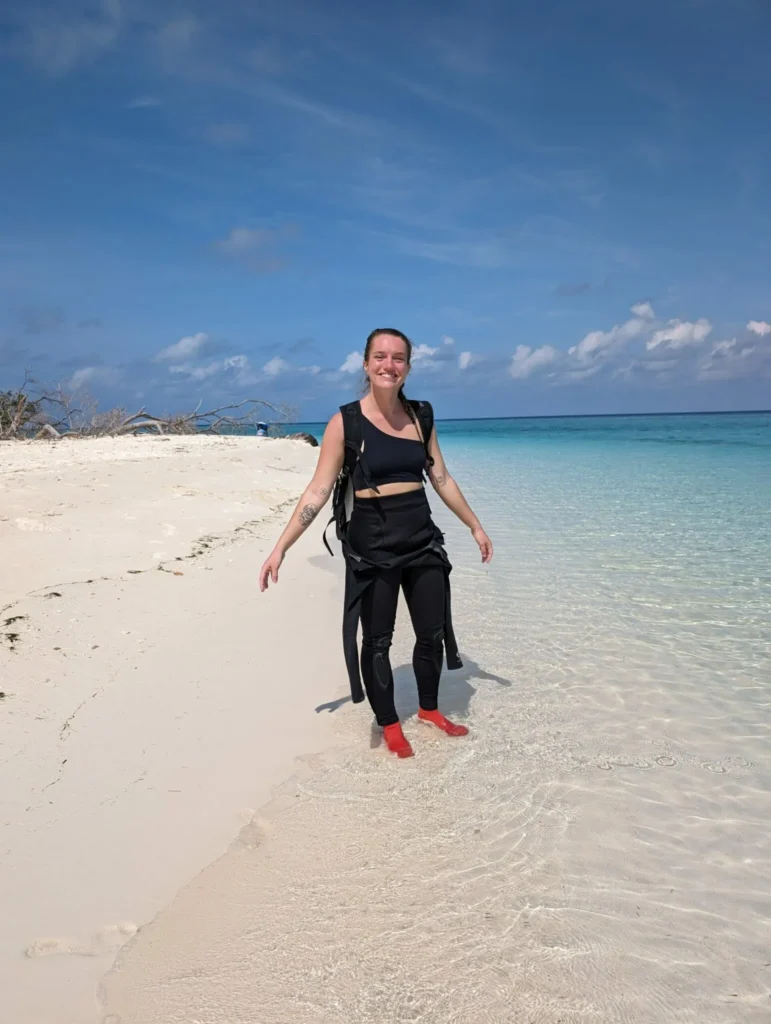
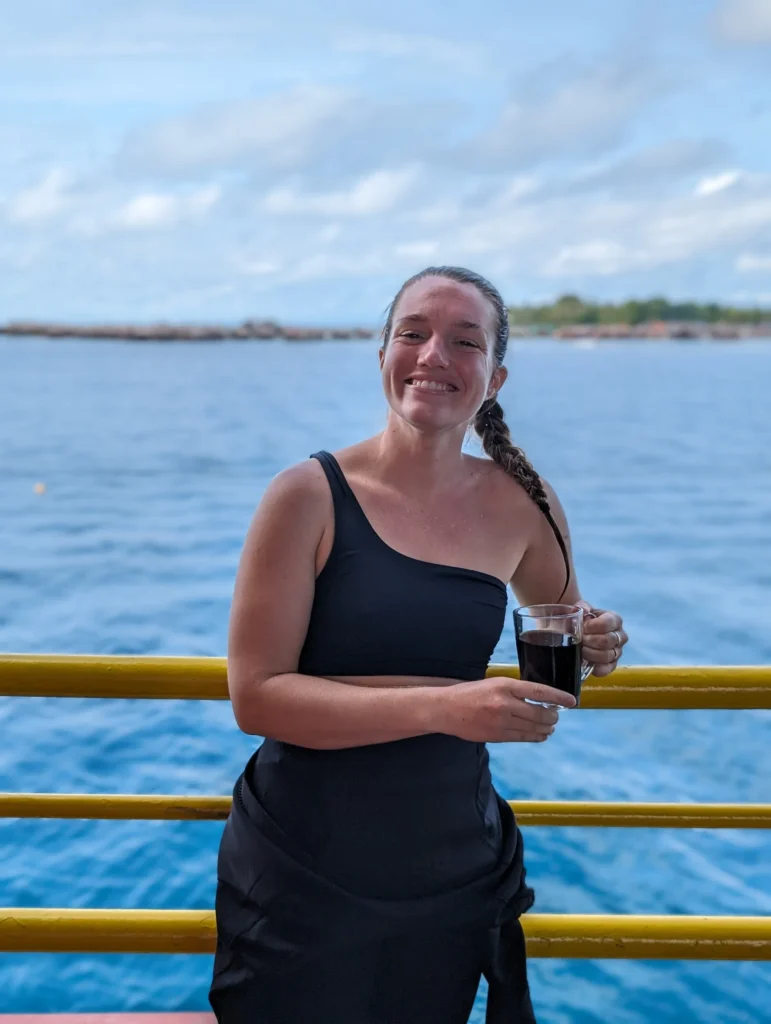
My top tips for diving in Sipadan (and Borneo)
If you’re a scuba diver, you know that it’s one of the most expensive hobbies that we could have chosen. But for us, it’s worth every penny. The ocean is such an incredible place, we’re lucky to have the opportunity to spend even an hour hanging out with the creatures who call it home.
I recommend picking the dive center that has the best prices for your budget, but if you can afford it – diving with Seaventures is the experience of a lifetime. You can read more about my experience with Seaventures.
If you are looking to save money, make sure to bring your own dive gear, travel overland, and travel in the off-season. Those are all ways that you can lower your price – but this trip won’t be ‘cheap’. We found that all of the dive centers around Mabul required you to pay extra for your gear rental, so that’s definitely one way to save money.
My biggest tip for scuba diving in Borneo is actually simple. Get out there and explore! This was one of the best trips I have ever been on and I would go back in a heartbeat. If you’re able, I recommend going sooner rather than later! The unique decommissioned oil rig is sure to bring more diving attention and divers to this underwater paradise.
What do you want to know about diving in Borneo? Do you have questions about Seaventures Dive Rig or diving at Sipadan Island? Check out my daily vlog series here and my honest experience of Seaventures. You can ask me any questions over on Instagram (@justynjen).
Happy diving!
